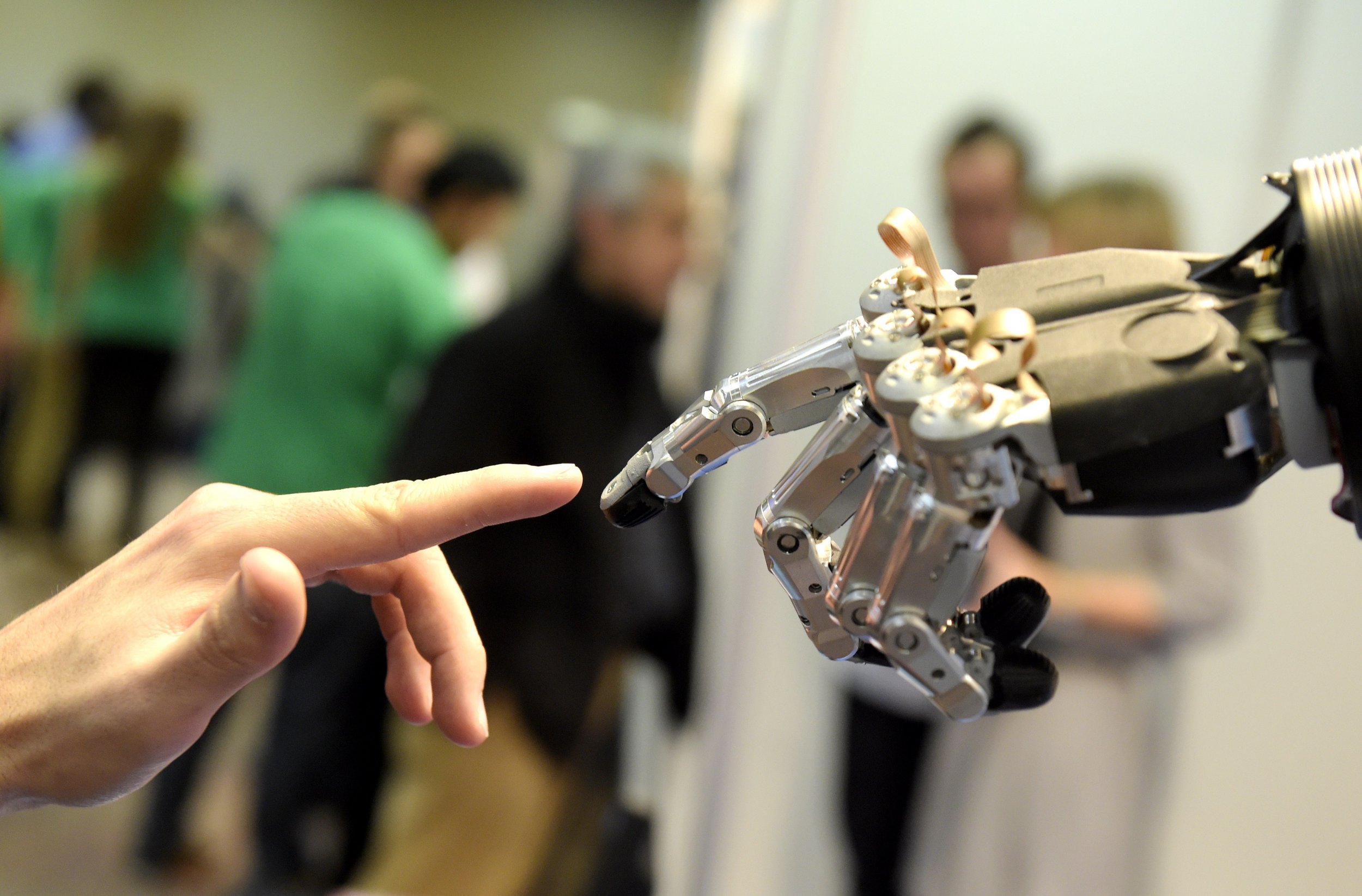
Scientists have created a 3D-printed bionic skin, potentially creating a way for robots to "feel" like humans do—and for humans to become more robotic, giving them "capabilities beyond the limitations of biology."
The team from the University of Minnesota has developed a new process to produce a stretchable electronic sensory fabric using a specially designed 3D printer.
The fabric—or device—is made up of four layers. There is a base layer of silicone, on top of which two layers of electrodes sit. These are coil-shaped pressure sensors. At the top is a layer that holds the whole thing together while it sets. This top layer is washed away at the end, leaving the pressure sensors exposed.
The 3D printer works by using four "inks" that make up the different layers. The end product is a flexible fabric of electronic sensors that can stretch up to three times their original size.
But what are the real-world applications? Scientists say the possibilities for future development are "endless."
The team who developed the fabric have not yet printed it directly onto human skin, but they did show it could be printed onto the curved surface of a model hand. They also connected the fabric to skin, finding it could be used to detect a pulse in real time.
Michael McAlpine, lead author of the study, published in the journal Advanced Materials, tells Newsweek that the technology could be used for developing new therapies where people have lost their sense of touch—such as leprosy, for example. "So long as the device is interfaced to any active nerve endings [it could help]," he says. "The device is sensitive enough to 'feel' your pulse, but more complex devices will need to be printed in the future in order to achieve the senses of temperature and texture."
Another avenue could be to incorporate the device into prosthetics, meaning the replacement limb could feel its environment.
In terms of robotics, McAlpine says it could be used in medicine, allowing surgeons to feel tissue remotely during minimally invasive robotic surgeries—at present, they have to rely on cameras alone.
But it could also be used to make robots more human-like. "There is great interest by companies such as Boston Dynamics [a private company that builds advanced robots] to create robots which behave and act more and more like humans," he says. "This is an important area. Equally as important from my standpoint is giving humans the ability to be more and more like robots, which means imparting bionic functionalities onto humans, which augment their capabilities beyond the limitations of biology."
"Imagine a soldier out in the field who carries a 3D printer in his or her backpack, and needs some device on the spot such as a chemical warfare sensor. The soldier could use the printer to directly print such a sensor onto his/her arm as a bionic solution."
He says there is a "ton of work" that will need to be done before the technology is developed further, however. "Our printing process can already handle materials with functionalities that are leaps and bounds beyond the limited selection of hard plastics that traditional 3D printers print. Ours can print a wide palette of electronic materials, biological materials, soft materials, and so on. But to truly be able to print on, say the body, we need to further develop our scan and print technologies to be able to print onto moving, complex surfaces, such as the intricate topology of a trembling hand.
"Our next steps will be to expand our catalog of sensor capabilities, integrate them with other 3D-printed technologies and biologies, and move toward printing not just on a model hand but a real hand. This could impact numerous areas, from surgery to bionics to warfare strategic advantages."
Uncommon Knowledge
Newsweek is committed to challenging conventional wisdom and finding connections in the search for common ground.
Newsweek is committed to challenging conventional wisdom and finding connections in the search for common ground.
About the writer
Hannah Osborne is Nesweek's Science Editor, based in London, UK. Hannah joined Newsweek in 2017 from IBTimes UK. She is ... Read more
To read how Newsweek uses AI as a newsroom tool, Click here.








